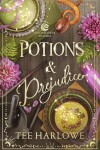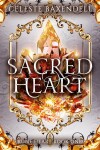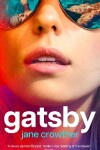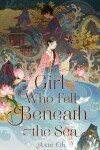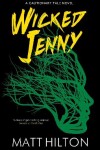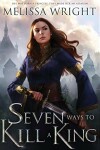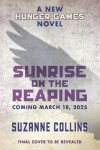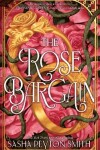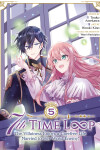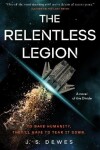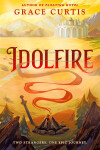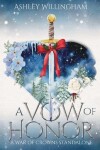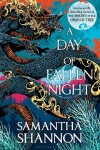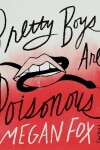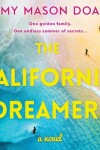The Cat Who Saved the Library
by Sosuke Natsukawa
Originally posted on my blog Nonstop Reader.
The Cat Who Saved the Library is an engaging bookish fantasy featuring literature and the love of reading, along with a return of the anthropomorphic cat from book 1,...
Originally posted on my blog Nonstop Reader.
The Cat Who Saved the Library is an engaging bookish fantasy featuring literature and the love of reading, along with a return of the anthropomorphic cat from book 1, by Sosuke Natsukawa. Due out 8th April 2025 from HarperVia, it's 224 pages and will be available in hardcover, paperback, audio, and ebook formats. It's worth noting that the ebook format has a handy interactive table of contents as well as interactive links and references throughout.
This is a multi-layered book. On the surface, it's a fairly simple story with another young person who suddenly notices that many of her beloved books are going missing mysteriously. She's shocked when a talking tabby cat visits and asks for her help saving books. On a deeper level, the author has a lot to say about reading, and books, and the love of literature.
There is a lot of literature name-dropping here and especially for young adult readers, there are numerous great works of western and eastern literature mentioned which will give hours of further reading prompts.
The characterizations are very lightly rendered and most of them are not detailed at all. They're not all likeable, I found the titular cat, Tiger, to be supercilious and quite abrasive, for example. On the other hand, the author makes some valuable universal observations on the nature of friendship, interconnectedness, humanity, and what drives creativity. It makes an oddly endearing whole.
The translation from the original Japanese by Louise Heal Kawai was relatively seamless. It was easily understandable and relatable to readers whilst still maintaining a distinctly Japanese aesthetic.
The unabridged audiobook has a run time of 5 hours and 56 minutes and is capably narrated by series narrator Kevin Shen. He delineates the characters (of all ages, both sexes, plus cat) well and distinctly. There were only a couple places where the dialogue was so fast moving that it's difficult to figure out out who was who in the scene. Sound and production quality are high throughout the recording.
Four stars. It's an undeniably odd but engaging story. Especially recommended for book lovers.
Disclosure: I received an ARC at no cost from the author/publisher for review purposes.
Sacred Heart
by Celeste Baxendell
Baxendell says the main characters name like 100 times in the first few pages. She also uses “it” far too much so the opening is both confusingly vague and jarringly specific.
I’m not sure how much farther I can...
Read moreBaxendell says the main characters name like 100 times in the first few pages. She also uses “it” far too much so the opening is both confusingly vague and jarringly specific.
I’m not sure how much farther I can take this. The main character is petulant and rude. Not quite enough to be unlikable. But enough to definitely not be likable.
The writing is fairly pedestrian and 10% in the story isn't that engaging and none of the characters are that interesting. I’d dnf (and I might) but it's not BAD. Ita just also not especially good. It's like a college sophomore's first book.
…I didn't make it much farther. It’s perhaps not bad but BORING. Tons of info dumps, underdeveloped characters I don’t care about and can barely keep straight. It took me forever to just get 15% of the way through and then I gave up.
The Girl Who Fell Beneath the Sea
by Axie Oh
The world within The Girl Who Fell Beneath the Sea was equally as beautiful as the cover, with a story that drew me in from the first page. The book is a reimagining of The Tale of Shim Cheong,...
Read moreThe world within The Girl Who Fell Beneath the Sea was equally as beautiful as the cover, with a story that drew me in from the first page. The book is a reimagining of The Tale of Shim Cheong, but with a bit of a feminist twist in Mina. The result is a story that is well balanced between the mythology elements and the reimagined. There was also a good amount of action to lend itself to the suspense of the conclusion, mixed well with love of all kinds... familial, romantic, and platonic alike.
Mina embodied all that it means to be a compassionate person, her love and loyalty for others without bounds. Her strength and agency for herself in a world hell-bent on defeating her purpose was inspiring to behold. As a human, she was out of her depth in a world of gods and goddesses, the power struggles among them and others in the spirit realm. But she stopped at nothing to protect those she cared about, even as many of those that surrounded her were not who they appeared to be at first sight.
It was a beautiful story, with a gorgeously written and lush setting for it to unfold within!
A Vow of Honor
by Ashley Willingham
Super quick, cute read. Really liked it! The miscommunication trope was a bit frustrating though. Docked half a star for that.
The California Dreamers
by Amy Mason Doan
Doan Does It Again. I titled my review of Doan's LADY SUNSHINE "Cinematic" and my review of her THE SUMMER LIST "The Boys Of Summer", and I can tell you that despite the few years away, Doan has not...
Read moreDoan Does It Again. I titled my review of Doan's LADY SUNSHINE "Cinematic" and my review of her THE SUMMER LIST "The Boys Of Summer", and I can tell you that despite the few years away, Doan has not lost a single step in her storytelling. This tale is just as cinematic and just as evocative as either of those prior books, and does a phenomenal job of showing one particularly extreme lifestyle... and the repercussions it can have as kids raised within it grow up and begin making decisions of their own.
As with much other fiction - and particularly as I write this review on the day that news breaks that, yet again, Augusta, Ga has arrested a parent trying to make a better life for his kids because he placed them in a safe area for a few minutes while going to a nearby spot for a job interview - yes, there are absolutely elements of this story that would not play in the real world of the 2020s. Yet this book also isn't set in the real world of the 2020s, instead being set decades earlier, in a period where I myself lived at least very certain specific elements of this life both in and out of the trailer park. Identifying which elements goes into spoiler territory, but suffice it to say that it involves what was truly a common practice among working class families of prior eras - even if it may be criminalized by Karens and bureaucrats today.
Still, even with these elements taken as the fiction they are, the story they work to show is itself quite powerful indeed, and Doan truly does an excellent job of showing how halcyon days may not have been as perfect as were remembered... and perhaps we didn't know all that we thought we did in those days either. Doan just has a way with coming of age stories, clearly, and yet again it truly shines through here in so very many ways.
Come for the beautiful, evocative prose that captures the best of (what I imagine to be, having never actually experienced it) the California summers, both back in the 80s and again in the early 2000s. Stay for the all too relatable story of children confronting what they think they know about their own childhoods and all the family dynamics this brings forth in adult children dealing with their parents.
Very much recommended.



